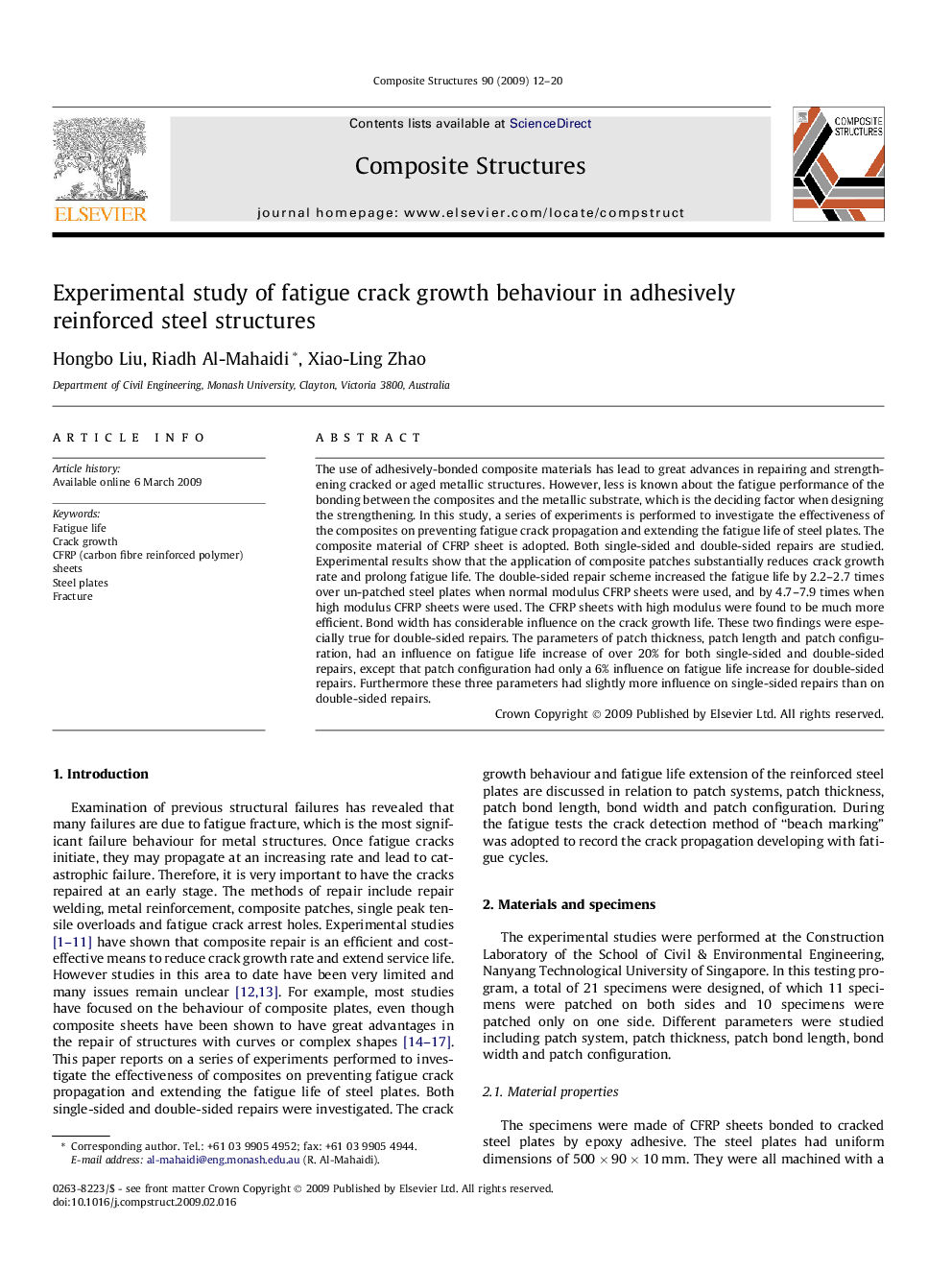| Article ID | Journal | Published Year | Pages | File Type |
|---|---|---|---|---|
| 253852 | Composite Structures | 2009 | 9 Pages |
The use of adhesively-bonded composite materials has lead to great advances in repairing and strengthening cracked or aged metallic structures. However, less is known about the fatigue performance of the bonding between the composites and the metallic substrate, which is the deciding factor when designing the strengthening. In this study, a series of experiments is performed to investigate the effectiveness of the composites on preventing fatigue crack propagation and extending the fatigue life of steel plates. The composite material of CFRP sheet is adopted. Both single-sided and double-sided repairs are studied. Experimental results show that the application of composite patches substantially reduces crack growth rate and prolong fatigue life. The double-sided repair scheme increased the fatigue life by 2.2–2.7 times over un-patched steel plates when normal modulus CFRP sheets were used, and by 4.7–7.9 times when high modulus CFRP sheets were used. The CFRP sheets with high modulus were found to be much more efficient. Bond width has considerable influence on the crack growth life. These two findings were especially true for double-sided repairs. The parameters of patch thickness, patch length and patch configuration, had an influence on fatigue life increase of over 20% for both single-sided and double-sided repairs, except that patch configuration had only a 6% influence on fatigue life increase for double-sided repairs. Furthermore these three parameters had slightly more influence on single-sided repairs than on double-sided repairs.
